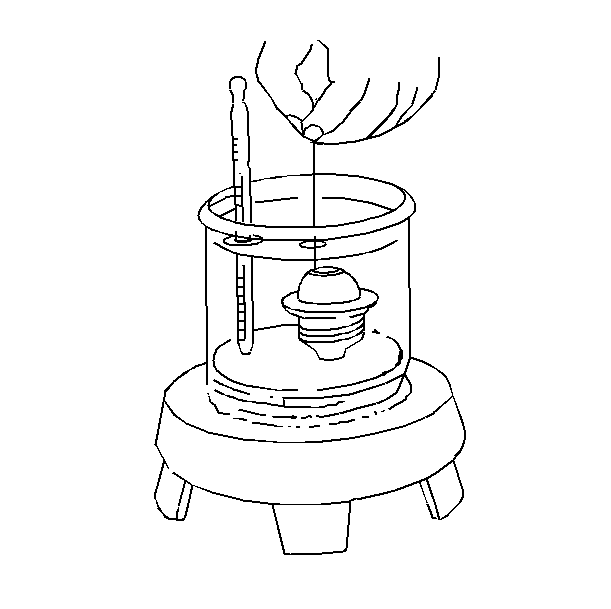A thermostat that stays closed or only partly open, restricts
the flow of the coolant in the system. This condition can cause the engine
to overheat. A thermostat that is stuck in the full open position prevents
the engine from reaching a normal operating temperature. Cold engine
operation causes a buildup of excess carbon deposits on the following
components:
Can also result in poor fuel economy and lack of heater performance.
- Remove the thermostat. Refer to
Engine Coolant Thermostat Replacement
.

- Suspend the thermostat
and a thermometer in water.
Ensure that the thermometer is close to the thermostat.
- Heat the water.
- Observe the thermostat.
| 4.1. | Record the temperature when the thermostat begins to open. |
| 4.2. | Record the temperature when the thermostat is fully open. |
- Ensure that the temperatures are to specifications.
- Replace the thermostat and the gasket as necessary. Refer to
Engine Coolant Thermostat Replacement
for gasoline
engines.
- Fill the cooling system. Refer to
Cooling System Draining and Filling
.
- Run the engine until the engine reaches normal operating temperature.
- Inspect for coolant leaks around the coolant outlet and the gasket.
- Inspect the coolant level. Add coolant as needed.
- Install the radiator cap.

